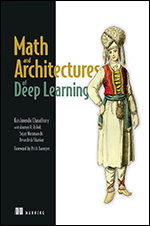ML Algorithms: Machine Learning Implementation Using Calculus & Probability
Machine Learning
| Intermediate
- 10 videos | 30m 55s
- Includes Assessment
- Earns a Badge
This course explores the use of multivariate calculus, derivative function representations, differentiation, and linear algebra to optimize ML (machine learning) algorithms. In 10 videos, learners will observe how to use probability theory to enable prediction and other analytical types in ML, including the role of probability in chain rule and Bayes' rule. First, you will explore the concepts of variance, covariance, and random vectors, before examining Likelihood and Posteriori estimation. Next, learn how to use estimation parameters to determine the best value of model parameters through data assimilation, and how it can be applied to ML. You will explore the role of calculus in deep learning, and the importance of derivatives in deep learning. Continue by learning optimization functions such as gradient descent, and whether to increase or decrease weight to maximize or minimize some metrics. You will learn to implement differentiation and integration in R and how to implement calculus derivatives, integrals using Python. Finally, you will examine the use of limits and series expansion in Python.
WHAT YOU WILL LEARN
-
Recognize the importance of probability in machine learningIdentify the role of probability in the chain and bayes rulesDefine the concepts of variance, covariance and random vectorsList the various estimation parameters that can be applied in machine learning, such as likelihood and posteriori estimationIdentify the role of calculus when applied in deep learning
-
Demonstrate the implementation of differentiation and integration in rImplement calculus, derivatives, and integrals using pythonDemonstrate the use of limits and series expansions in pythonDeclare symbols using python, find multiple derivatives using the diff function of sympy, and compute indefinite integrals using the sympy library
IN THIS COURSE
-
1m 45s
-
3m 12sAfter completing this video, you will be able to recognize the importance of probability in machine learning. FREE ACCESS
-
3. Chain and Bayes Rules2m 36sLearn how to identify the role of probability in the chain and Bayes rules. FREE ACCESS
-
4. Variance and Random Vectors3m 30sLearn how to define the concepts of variance, covariance, and random vectors. FREE ACCESS
-
5. Estimation Parameters3m 27sAfter completing this video, you will be able to list the various estimation parameters that can be applied in machine learning, such as Maximum Likelihood and Bayesian estimation. FREE ACCESS
-
6. Deep Learning and Calculus2m 56sIn this video, you will learn how to identify the role of calculus in deep learning. FREE ACCESS
-
7. R and Calculus4m 9sLearn how to apply differentiation and integration in R. FREE ACCESS
-
8. Calculus in Python3m 13sIn this video, you will learn how to implement calculus, derivatives, and integrals using Python. FREE ACCESS
-
9. Series Expansion in Python3m 10sIn this video, you will learn how to use limits and series expansions in Python. FREE ACCESS
-
10. Exercise: Derivatives and Integrals with SymPy2m 58sIn this video, you will learn how to declare symbols using Python, find multiple derivatives using the diff function of SymPy, and compute indefinite integrals using the SymPy library. FREE ACCESS
EARN A DIGITAL BADGE WHEN YOU COMPLETE THIS COURSE
Skillsoft is providing you the opportunity to earn a digital badge upon successful completion on some of our courses, which can be shared on any social network or business platform.
Digital badges are yours to keep, forever.






